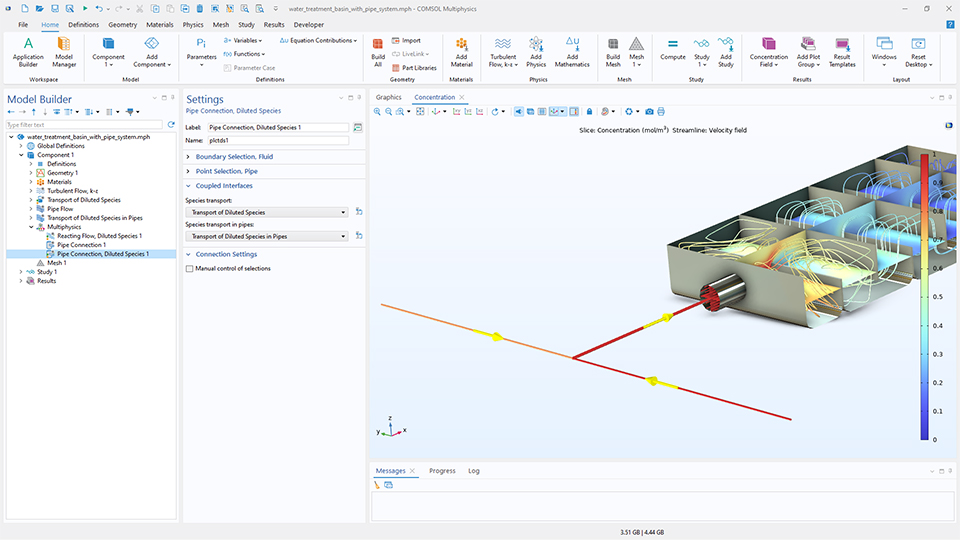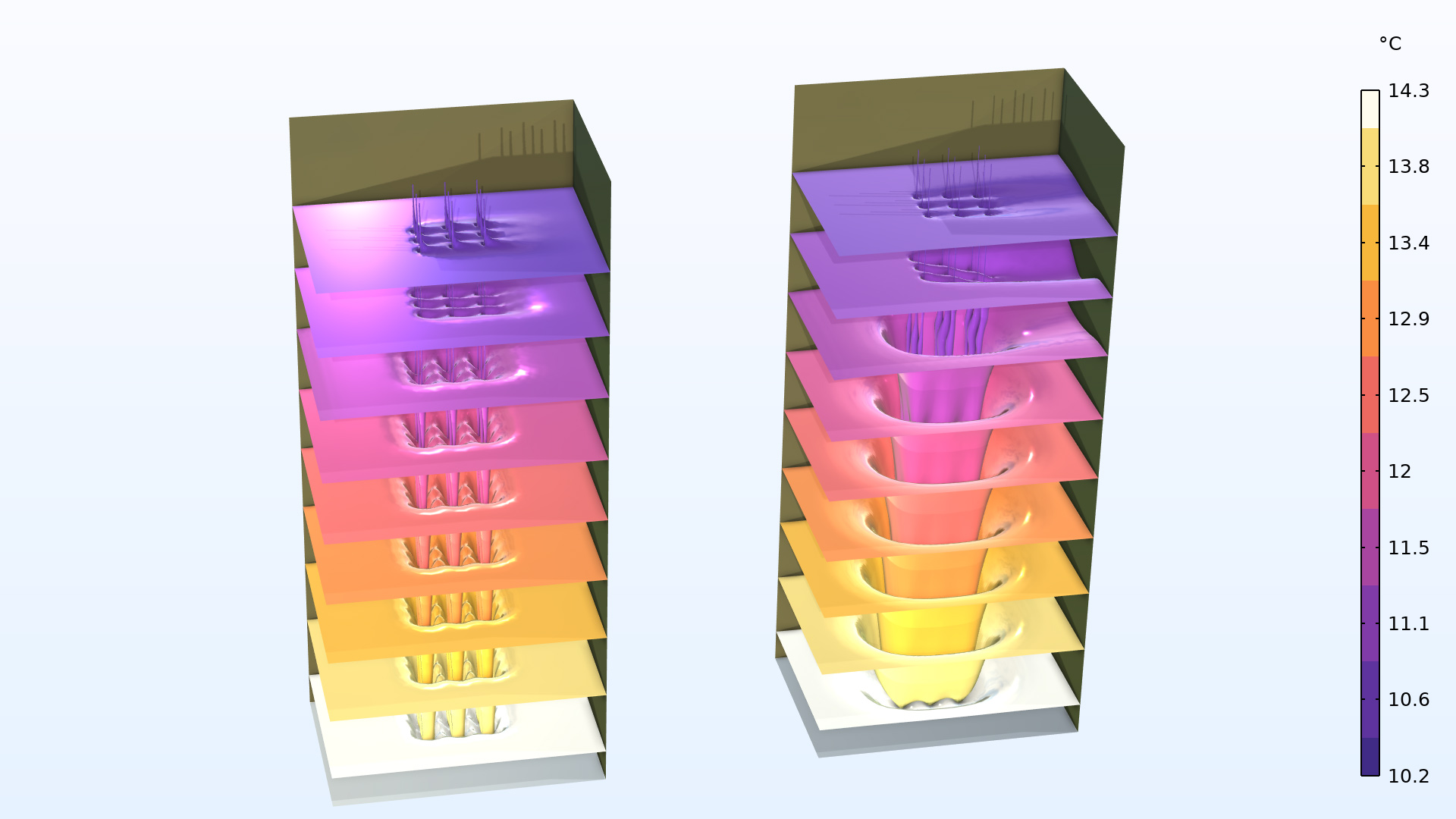Pipe Flow Module Updates
For users of the Pipe Flow Module, COMSOL Multiphysics® version 6.4 introduces new features for the simulation of flow control and restrictions, along with extended capabilities for simulating concentration profiles in pipe networks and connecting pipe systems with volume domains. Learn more about these updates below.
Model Flow Regulation with Orifice, Control Valve, and 3-Way Valve Features
Three new features extend the Pipe Flow interface for more flexible modeling of pipe networks. The Orifice feature captures pressure drops from both sharp-edged and rounded openings, providing a precise representation of flow restrictions. The Control Valve feature simulates adjustable valves using either loss coefficients or industry-standard flow coefficients (Cv or Kv). The 3-Way Valve feature supports the mixing and diversion of flows in networks with three connected pipes, as well as parameterization using loss coefficients or Cv or Kv values. The valve features enable simulation of adjustable valves with different opening characteristics, making it possible to represent a wide range of valve types.

New Junction and Open Pipe End Features
The capabilities for simulating concentration profiles in pipe networks have been extended with two new features. The Junction node captures mass transfer at fittings with three or more connected pipes. The Open Pipe End node connects a pipe to external systems, such as tanks or reservoirs, with a specified concentration. Both features support reversible flow, automatically adapting boundary conditions to the flow direction for more realistic and flexible simulations.

Pipe Connection, Diluted Species Coupling
It is now significantly easier to connect pipe systems with volume domains using the new Pipe Connection, Diluted Species multiphysics coupling. This coupling links 1D pipe segments modeled with the Diluted Species in Pipes interface to volume domains modeled with the Transport of Diluted Species interface. The coupling provides accurate mass transfer representation across boundaries and supports reversible flow, automatically adapting boundary conditions to the flow direction.

Updated Tutorial Model
COMSOL Multiphysics® version 6.4 brings one updated tutorial model to the Pipe Flow Module.
Borehole Heat Exchanger

